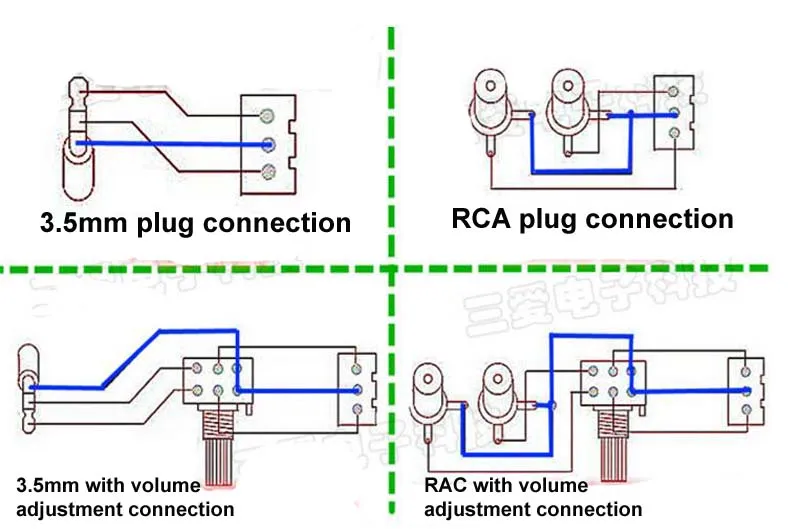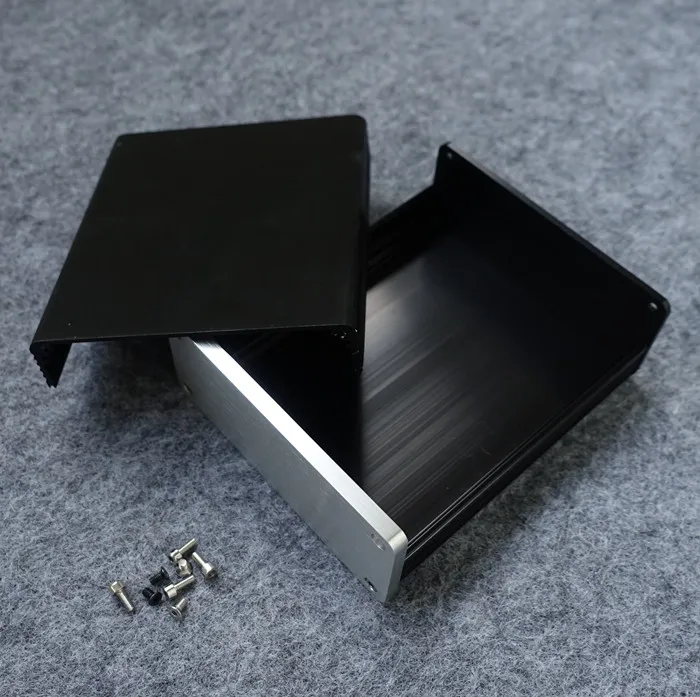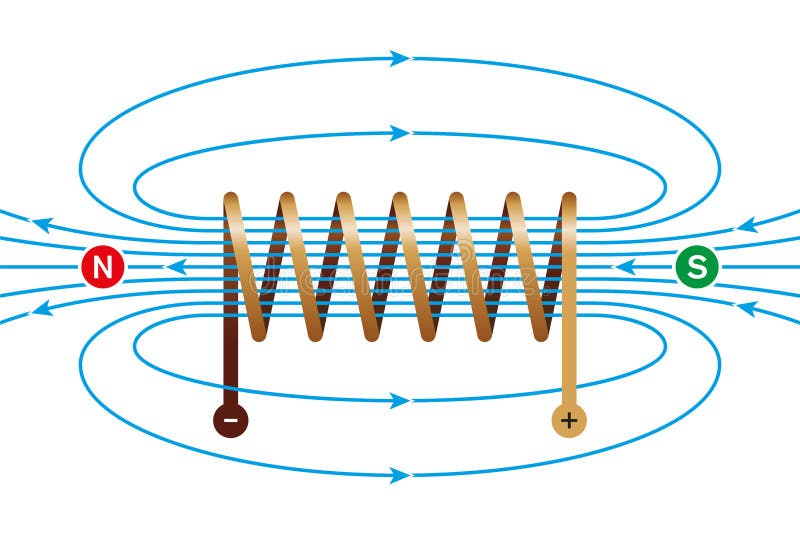Hello, at the first, sorry, I'm spanish and my english is not very good.
Ok, I want to build a power amp with one of these module (or similar)
JINSHENGDA TK2050 50W+50W Dual Channel Class T Stereo Audio Digital Amplifier Board-in Amplifier from Consumer Electronics on Aliexpress.com | Alibaba Group
I have a digital source (raspberry) and preamp (A USB soundcard Edirol UA-25) so I think I needn't more components that the board, is right?
The power supply will become from a laptop, I think is 19V, my questions are:
- For the input audio source I've seen these schema, it's ok? I will use two rca to 3 pins connector

- I don't need volume control, because my sound card has one, it's ok?
- And the last one, I can't see if the board has a decoder chip, I don't need it because is the sound card wich decode the audio.
If all is ok, in a future will buy an aluminium case, something ike these:

Thanks in advance.
Ok, I want to build a power amp with one of these module (or similar)
JINSHENGDA TK2050 50W+50W Dual Channel Class T Stereo Audio Digital Amplifier Board-in Amplifier from Consumer Electronics on Aliexpress.com | Alibaba Group
I have a digital source (raspberry) and preamp (A USB soundcard Edirol UA-25) so I think I needn't more components that the board, is right?
The power supply will become from a laptop, I think is 19V, my questions are:
- For the input audio source I've seen these schema, it's ok? I will use two rca to 3 pins connector

- I don't need volume control, because my sound card has one, it's ok?
- And the last one, I can't see if the board has a decoder chip, I don't need it because is the sound card wich decode the audio.
If all is ok, in a future will buy an aluminium case, something ike these:

Thanks in advance.
A laptop power supply should be OK for an amp like this.
The board is just an amplifier, it has no decoding of any kind built in. That means it accepts normal audio signals.
I would strongly advise adding the volume control. Not only is it a good safeguard, it will also allow you to have the source turned up to full volume all the time which is probably much better quality than using the digital attenuation of a soundcard.
The board is just an amplifier, it has no decoding of any kind built in. That means it accepts normal audio signals.
I would strongly advise adding the volume control. Not only is it a good safeguard, it will also allow you to have the source turned up to full volume all the time which is probably much better quality than using the digital attenuation of a soundcard.
Something like this?
Breeze Audio BA100 HiFi Class D Audio Digital Power Amplifier tpa3116d2 TPA3116 Advanced 2*100W Mini Home Aluminum Enclosure amp-in Amplifier from Consumer Electronics on Aliexpress.com | Alibaba Group
In fact I prefer to build a completed one instead buil it by myself.
How it works with these setup? Amplifier at full volume and control it with the sound card or sound card at full volume and control it with amplifier?
Breeze Audio BA100 HiFi Class D Audio Digital Power Amplifier tpa3116d2 TPA3116 Advanced 2*100W Mini Home Aluminum Enclosure amp-in Amplifier from Consumer Electronics on Aliexpress.com | Alibaba Group
In fact I prefer to build a completed one instead buil it by myself.
How it works with these setup? Amplifier at full volume and control it with the sound card or sound card at full volume and control it with amplifier?
Sound card at full volume and control it the amplifier would be my choice.
My support to Mooly's conclusion.
If you have to generate a curved surface, such as a sine-wave, but you only have small squared steps, such as from a DAC, you want to have as many small steps as possible. Only when you use the sound-card at full level, you leave the possibility for all DAC steps to be used (you use the full dynamic range). With the volume potentiometer, you can scale-down the output from the DAC in an analog manner without adding or increasing steps. If you reduce the volume digitally by reducing the output from the sound-card, you use only a part of the dynamic range of the DAC and each DAC step becomes relatively larger such that your distortion content is higher.
My support to Mooly's conclusion.
If you have to generate a curved surface, such as a sine-wave, but you only have small squared steps, such as from a DAC, you want to have as many small steps as possible. Only when you use the sound-card at full level, you leave the possibility for all DAC steps to be used (you use the full dynamic range). With the volume potentiometer, you can scale-down the output from the DAC in an analog manner without adding or increasing steps. If you reduce the volume digitally by reducing the output from the sound-card, you use only a part of the dynamic range of the DAC and each DAC step becomes relatively larger such that your distortion content is higher.
Wow, great reply

These confirm I have no idea of electronic 😀
I decided to buy an finished amp with volume control like my SMSL SA-S3, please allow me to share some photos of my entertainment center












Thanks a lot.
Wow, great reply
These confirm I have no idea of electronic 😀
I decided to buy an finished amp with volume control like my SMSL SA-S3, please allow me to share some photos of my entertainment center
Thanks a lot.
Your woodwork is really excellent.
Electronics is not as difficult as it sometimes seems. Most of us unfortunately are taught by learning about the details and it takes many years to get an overview. The moment you have a qualitative overview, the details become much more logical.
Universities mainly teach details. Practical work leaves an overview.
To be honest, the woodwork was made by a friend of me, I had made design and electronic.
Returning to amplifiers, I decided to buy one with 3116 chip, but there are two versions, one with two chips (3116d2) and one with only one chip, I think these because the power they say is 50Wx2 or 100Wx2, so, all the amplifiers with 3116d2 bring another chip (NE5532p) I think is a pream, but, what is the function? I really need it in my setup?
Thanks.
Returning to amplifiers, I decided to buy one with 3116 chip, but there are two versions, one with two chips (3116d2) and one with only one chip, I think these because the power they say is 50Wx2 or 100Wx2, so, all the amplifiers with 3116d2 bring another chip (NE5532p) I think is a pream, but, what is the function? I really need it in my setup?
Thanks.
To be honest, the woodwork was made by a friend of me, I had made design and electronic.
Returning to amplifiers, I decided to buy one with 3116 chip, but there are two versions, one with two chips (3116d2) and one with only one chip, I think these because the power they say is 50Wx2 or 100Wx2, so, all the amplifiers with 3116d2 bring another chip (NE5532p) I think is a pream, but, what is the function? I really need it in my setup?
Thanks.
hi bubu54
nice speakers.
there are a lot of boards/amps with TPA3116. generally the op amp are for input buffer so gain 1= same output voltage as input (ideally).
the dual chip version of the complete amp is here:
read
https://www.diyaudio.com/forums/cla...tpa3116-2-0-100w-dual-chip-2.html#post5790490
i thought you bought this smls SA S3?
important is to find a board with gain setting because normally the gain is set high = 30 or 36dB. that means less volume knob movement and it gets loud. disadvantage is the noise. so better to set the gain as low as possible about 20dB.the complete amps doesn´t provide this generally. some board yes.
chris
Last edited:
To be honest, the woodwork was made by a friend of me, I had made design and electronic.
Returning to amplifiers, I decided to buy one with 3116 chip, but there are two versions, one with two chips (3116d2) and one with only one chip, I think these because the power they say is 50Wx2 or 100Wx2, so, all the amplifiers with 3116d2 bring another chip (NE5532p) I think is a pream, but, what is the function? I really need it in my setup?
Thanks.
Hi bubu54,
As Chris rightfully writes, the NE5532 serves as a buffer before the TPA3116 chip. The TPA3116 chip has a tendency of producing "hiss" if the chip input signal is not low impedance. The NE5532 buffer has a low output impedance for the TPA3116 input while the NE5532 buffer input has a higher input impedance ensuring that you can use most signal sources. Thus, a "buffer" serves simply as an impedance converter.
Two TPA3116 chips for a two channel amplifier (stereo) is mainly for automotive use where you often use 2 Ohm speakers. The two outputs of each chip are simply connected in parallel such that you can draw more current as needed for the 2 Ohm speakers. A single TPA3116 chip can handle down to 4 Ohm loading on each of the two outputs. Unless you use speakers below 4 Ohm, you have no gain from using a double-chip amplifier but it won't harm either as it only leaves a current capability margin you do not use.
Nice build!
Only thing I would change is the orientation of 1 of the coils in the crossover; put 1 of the 2 yellow/black coils flat to the board, then they all point an other direction and they will have less interference with each other.
Only thing I would change is the orientation of 1 of the coils in the crossover; put 1 of the 2 yellow/black coils flat to the board, then they all point an other direction and they will have less interference with each other.
hi bubu54
nice speakers.
there are a lot of boards/amps with TPA3116. generally the op amp are for input buffer so gain 1= same output voltage as input (ideally).
the dual chip version of the complete amp is here:
read
https://www.diyaudio.com/forums/cla...tpa3116-2-0-100w-dual-chip-2.html#post5790490
i thought you bought this smls SA S3?
important is to find a board with gain setting because normally the gain is set high = 30 or 36dB. that means less volume knob movement and it gets loud. disadvantage is the noise. so better to set the gain as low as possible about 20dB.the complete amps doesn´t provide this generally. some board yes.
chris
Thanks,
No, I bought the SMSL some years ago, it's sound spectacuar, but I read that tripath chips are dinosaurs, altought I think they are the most audiophile.
Nice build!
Only thing I would change is the orientation of 1 of the coils in the crossover; put 1 of the 2 yellow/black coils flat to the board, then they all point an other direction and they will have less interference with each other.
Yes, you are not the first person to say this, but the speaker is sealed yet, and the dificult to change it not (I'm not sure what is the word) compensate the possible benefits.
Thanks to all people for the help!!! 🙂
It looks pretty simple to me to remove the woofer and bend 1 down or bend both 45 degrees outward, so they make a 90 degree angle to each other.
The coils have magnetic fields like this:

The coils have magnetic fields like this:

The two chip 3116 amp "Breeze Audio BA100" has half the output impedance of the single chip solution. This can be an advantage sound wise, even with 4-8 ohms. The power is the same, as it depends on the supply voltage. In this case the two chip amp has larger, lower resistance output coils, too.
Last, the power supply is buffered by 10x 470uF capacitors, this is a nice, low ESR solution, not often seen on cheap amp boards.
It´s only problem, as you can read in another thread: The NE5532 OP-amp seems to be fake, changing it for a real one for about 1-2€ did improve sound as some report (me too). There is no need /gain by getting a more expensive OP-amp. Just make sure it is a real one. Nice Loudspeaker!
PS if you plan to correct the position of the coil, do it soon. The loudspeaker may stick to the paint if you wait too long. Be careful not to ruin the paint when removing it.
Last, the power supply is buffered by 10x 470uF capacitors, this is a nice, low ESR solution, not often seen on cheap amp boards.
It´s only problem, as you can read in another thread: The NE5532 OP-amp seems to be fake, changing it for a real one for about 1-2€ did improve sound as some report (me too). There is no need /gain by getting a more expensive OP-amp. Just make sure it is a real one. Nice Loudspeaker!
PS if you plan to correct the position of the coil, do it soon. The loudspeaker may stick to the paint if you wait too long. Be careful not to ruin the paint when removing it.
Last edited:
- Status
- Not open for further replies.
- Home
- Amplifiers
- Class D
- Build a power amp with tk2050 module